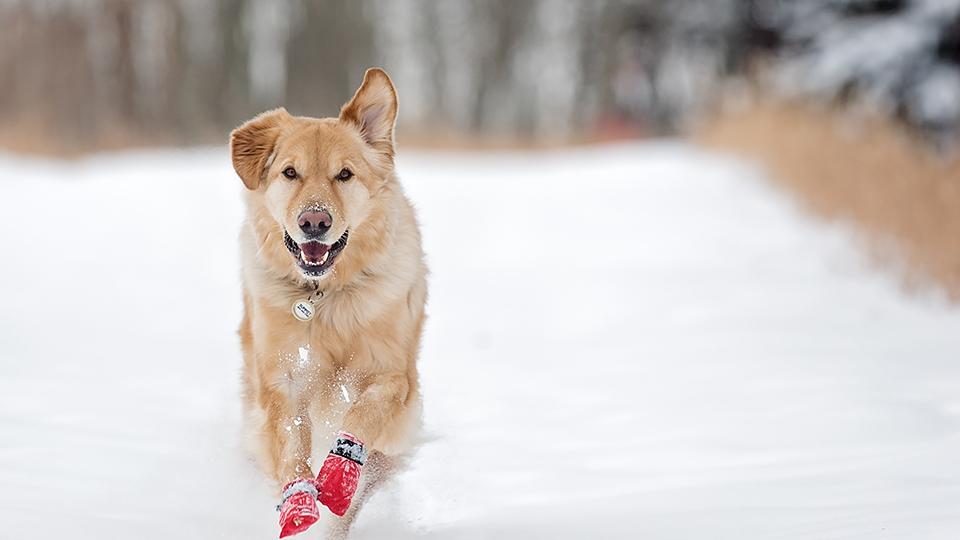Winter can be a beautiful season, but it also brings unique challenges for your furry companions. As temperatures drop and the air becomes harsher, dogs require special attention to stay healthy and comfortable. Ensuring that your dog is well-prepared for winter isn’t just about comfort—it’s also crucial for their overall health. Cold weather can present numerous risks, including hypothermia, frostbite, dry skin, and even weight gain due to reduced activity. With a little extra care and attention, you can keep your dog safe and happy through the chilly months. Let’s explore some essential tips for taking care of your dog during winter.
Maintaining Proper Warmth for Your Dog
One of the primary concerns in winter is ensuring your dog stays warm, both indoors and outdoors. Inside your home, it’s important to create a warm, cozy environment where your dog can feel comfortable. Drafty rooms can make the cold worse for dogs, especially smaller or short-haired breeds, so providing warm bedding, blankets, and perhaps even heated dog beds can make a big difference. Consider using dog-safe heating devices in areas where your dog rests frequently to ensure they stay cozy.
When venturing outside, winter gear such as sweaters and coats become essential, especially for dogs with shorter fur or those more sensitive to the cold. Larger, double-coated breeds might not need as much protection, but smaller dogs often benefit from these extra layers. It’s important to find the right size and type of coat for your dog’s specific needs. Keep in mind that even with protective clothing, outdoor time should be limited during harsh winter days. Extended exposure to low temperatures can lead to discomfort, and in some cases, frostbite or hypothermia. Always watch for signs like shivering or reluctance to walk, as these can indicate your dog is too cold.

Protecting Your Dog’s Paws in Winter
Cold weather isn’t just tough on your dog’s body—it can also wreak havoc on their paws. Snow, ice, and road salt can irritate your dog’s paw pads and even lead to injuries. Before heading out for walks, applying a paw balm or wax can create a protective barrier, helping to prevent damage from the cold ground and harsh chemicals. After walks, it’s equally important to clean your dog’s paws to remove any lingering salt or debris that could cause irritation.
Dog booties offer another layer of protection, especially for dogs that will be walking on snow-covered or salted paths. Although it may take some time for your dog to get used to wearing them, booties can shield paws from frostbite and prevent cracked pads. If booties aren’t an option, be sure to check your dog’s paws regularly for any signs of injury or dryness. In addition, using a dog-friendly moisturizer can help prevent the pads from drying out and cracking, which can be painful and lead to infections if left untreated.

Winter Nutrition and Hydration
In the colder months, your dog’s nutritional needs may change slightly. If your dog is less active during winter, it’s essential to adjust their diet to prevent unnecessary weight gain. Conversely, dogs that spend more time outdoors or stay very active may require more calories to maintain their energy levels and body heat. Providing a balanced diet that supports healthy skin and coat is crucial, as the dry winter air can take a toll on your dog’s skin, leading to itching and flaking. Omega-3 fatty acids are especially beneficial for promoting skin health and a shiny coat, so consider adding supplements if needed.
Hydration is equally important during winter, as dogs can become dehydrated from both indoor heating and cold outdoor air. Make sure your dog always has access to fresh water, and be mindful of water bowls freezing if kept outside. Staying properly hydrated supports not only your dog’s overall health but also helps maintain a healthy coat and skin.
Grooming Tips for Winter
While your dog’s coat may be its natural defense against the cold, proper grooming is essential for keeping their hair in top condition throughout winter. Regular brushing is necessary to prevent mats from forming, especially for long-haired breeds. Mats not only make your dog’s coat look messy but can also trap moisture and cause skin irritations. Regular brushing also distributes the natural oils in your dog’s fur, which helps maintain a shiny, healthy coat even in dry winter conditions.
Bathing, on the other hand, should be done less frequently during winter to avoid stripping away these natural oils. When you do bathe your dog, use warm water and moisturizing shampoos to help protect against the drying effects of cold weather. After baths, it’s crucial to dry your dog thoroughly before allowing them back outside. Using a towel or blow-dryer on a low, warm setting can prevent your dog from getting chilled, as wet fur can make them more susceptible to the cold.
Exercise and Mental Stimulation in Winter
Winter weather often means shorter, colder days, which can lead to decreased outdoor activity for your dog. However, it’s important to keep your dog active and mentally stimulated, even when it’s too cold for long walks. Indoor exercises such as playing fetch in a hallway, tug-of-war, or setting up a mini obstacle course can help burn off some energy. Keeping your dog moving not only helps maintain their physical health but also reduces boredom, which can lead to behavioral issues.
Mental stimulation is just as important during winter, and there are plenty of ways to engage your dog’s mind indoors. Puzzle toys, scent games, or even teaching your dog new tricks can provide much-needed mental exercise when outdoor activities are limited. For those days when it’s possible to venture outside, aim for shorter, more frequent walks instead of long outings. This helps keep your dog active while minimizing their exposure to the cold.

Special Care for Senior Dogs in Winter
Winter can be particularly tough on senior dogs, especially those with joint issues or arthritis. Cold weather often exacerbates joint pain, making it harder for older dogs to move comfortably. Providing joint support through supplements like glucosamine and chondroitin can help ease their discomfort. Additionally, ensuring they have a warm, comfortable place to rest, such as an orthopedic bed with heating pads or extra blankets, can improve their overall well-being during winter.
Since senior dogs are more vulnerable to the cold, limiting their time outdoors is essential. They may require extra layers of warmth, and shorter walks to avoid unnecessary stress on their joints. Maintaining a gentle exercise routine, such as indoor walking or low-impact play, will help keep them active without causing strain on their aging bodies.

Recognizing Winter Health Problems in Dogs
Despite all the precautions, it’s crucial to recognize the signs of winter-related health issues in your dog. Hypothermia and frostbite are two of the most serious risks during the cold months. If your dog starts shivering, becomes lethargic, or has pale gums, these could be symptoms of hypothermia. Frostbite is more likely to affect extremities like the ears, tail, and paws. If you notice any discoloration or your dog seems particularly sensitive in these areas, it’s important to seek veterinary care immediately.
Dry skin is another common issue during winter. If your dog starts itching more than usual or develops flaky skin, it may be due to the cold, dry air. To counter this, consider using a humidifier in your home and moisturizing sprays for your dog’s coat. Ensuring proper hydration and nutrition will also help combat these issues.
Caring for your dog during winter requires extra attention and adjustments to their routine. From maintaining warmth and protecting paws to adjusting diet and providing proper grooming, these small changes can make a big difference in keeping your dog healthy and happy. By staying mindful of your dog’s specific needs and being proactive about their care, you can ensure that winter is just another enjoyable season for both you and your furry friend. With these tips, your dog will not only stay safe but thrive throughout the cold months.

After 5 years in a high pace business management role, I partnered with an e-commerce developer to start building Dog Supplies Warehouse.
Our number one goal is to make sure all products are managed and delivered to our customers door fast and accurately.
